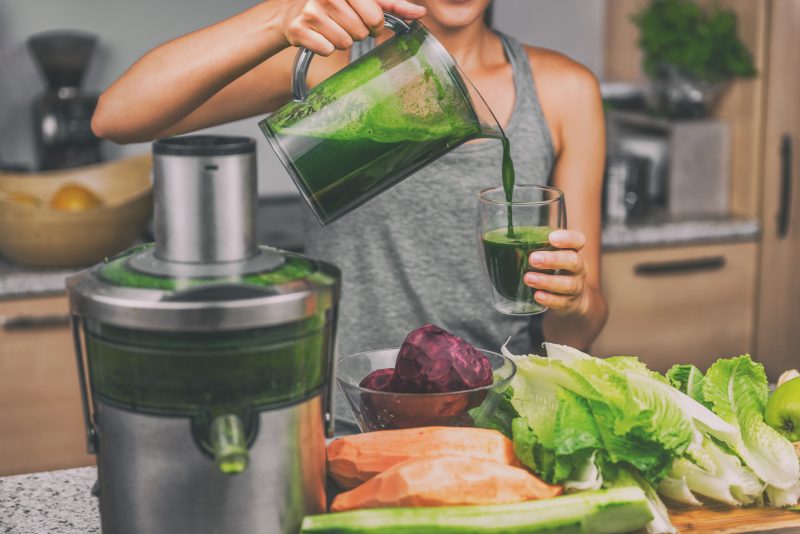Sign up for workout ideas, training advice, reviews of the latest gear and more.






When it comes to health, weight loss, and overall vitality, the terms “cleanse” and “detox diet” are everywhere. Influencers, nutrition coaches, magazines, and wellness brands promote them as quick resets, a way to flush toxins, lose weight fast, and reboot metabolism. But how much of that is myth? And if you do choose to do a cleanse or detox, how can you do it safely and effectively?
In this guide, we’ll walk you through:
By the end, you’ll have an evidence-informed roadmap for whether and how to do a cleanse/detox, and how to support your body during and after.
Sometimes the terms “cleanse” and “detox” are used interchangeably. On Women’s Fit Club, we emphasize the distinction: a cleanse is often viewed as a gentler, short-term reset — e.g. using whole foods, juices, or increased hydration. A detox diet tends to be more extreme, sometimes involving fasting, juice-only days, or laxative/herbal support.
(You may already have a post like this: Difference Between a Cleanse and Detox Diet — link that here to your internal article.)
Both are built on the belief that your body needs help eliminating “toxins,” even though your body already has detox systems (liver, kidneys, lungs, skin). The key is whether your approach supports those systems, or stresses them.
People embark on cleanses/detoxes for several reasons:
While these outcomes are appealing, it’s critical to approach cleanses with caution and evidence-based practices.
Your liver, kidneys, skin, lungs, and digestive system are continuously filtering and eliminating waste and toxins. Claims that a detox diet can “cleanse your blood” or “flush out heavy metals” are largely unsubstantiated. Healthline
In fact, many of the positive feelings people report during a detox come from eliminating processed foods, added sugar, alcohol, and eating more whole foods — not from a mysterious “cleanse effect.” Healthline+1
Because of these risks, detox strategies should be gentle, short-term, and well-planned.
When planning a cleanse, you have several approaches — each with pros and cons.
You consume only fresh juices or smoothies made from vegetables and fruits, sometimes supplemented with herbal teas or water. This is one of the more popular detox styles.
Pros: Easier digestion, high vitamins and antioxidants, promoting hydration.
Cons: Low protein & fiber, blood sugar fluctuation, not sustainable long-term.
Rather than juicing everything, you eat whole, minimally processed foods: vegetables, lean proteins, legumes, fruits, nuts, seeds, and eliminate alcohol, processed sugars, and refined grains. This is gentler and more sustainable.
You restrict calories, sometimes with a window (e.g. 10-hour eating window), or designate one or two “cleanse days” per week. Some herbs or teas might be included.
This involves stronger measures like laxatives, enemas, or colonics. These are most risky: dehydration, electrolyte imbalance, gut flora disruption. Use extreme caution here if you attempt this (and preferably under medical supervision).
These focus on foods or supplements purported to “support” liver detoxification (e.g. milk thistle, dandelion root). Evidence is weak; always check with a medical professional before using herbs intensively.
An extreme variant involving just a lemonade (lemon, maple syrup, cayenne) drink plus laxatives or saltwater flush. Lacks protein, fats, and many essential nutrients.
Here’s a gentle, evidence-informed detox you can follow. Always consult your healthcare provider before starting.
Daily Guidelines:
Sample Day:
You can tabulate or rotate recipes to keep it interesting.
While detox diets aren’t miracle cures, if you do a gentle, well-structured cleanse, you may notice:
These benefits come often from what you add — fiber, nutrients, hydration — rather than “toxins out.”
A detox is only as good as what comes after. Here’s how to make positive changes stick:
Link to your articles such as Healthy Recipes After Detox or Building Long-Term Habits Post Cleanse for readers interested in deeper follow-up.
Q: Is detoxing safe?
A: It can be, if done gently and for a short time. Harsh detoxes (fasting, colon cleanses) carry risks. Your body already detoxifies naturally. Healthline+1
Q: How often can I detox?
A: Many do a gentle reset 1–2 times per year, or a mini cleanse once a month. Long or repeated harsh cleanses are not recommended.
Q: Will I lose fat on a detox?
A: You might lose weight early, but that’s often water, glycogen, or food mass. Fat loss is more sustainable through lifestyle changes. Healthline
Q: Can I exercise during a detox?
A: Light to moderate movement is fine (walking, yoga). Avoid intense training while on a strict detox.
Q: What about detox supplements or pills?
A: Use caution — many are under-regulated and may cause side effects or toxicity. Always seek professional guidance.
Q: How do I choose a detox plan?
A: Pick one that supports your health (not extremes), includes protein & fiber, fits your lifestyle, and can be sustained or transitioned cleanly.
| Day | Morning | Mid-Morning | Lunch | Snack | Dinner | Notes |
|---|---|---|---|---|---|---|
| 1 | Warm lemon water + smoothie | Herbal tea + nuts | Big veggie bowl with lean protein | Veggies + hummus | Steamed fish + greens | Hydrate 2 L+ |
| 2 | Lemon water + green juice | Fruit + seeds | Quinoa + mixed vegetable bowl | Celery & nut butter | Baked tofu + roasted veg | Gentle movement |
| 3 | Lemon water + smoothie | Herbal tea + fruit | Lentil soup + salad | Veggies or fruit | Grilled chicken + steamed veggies | Rest well |
| 4 | Lemon water + juice | Fruit + yogurt alternative | Veggie-packed wrap + protein | Nuts + raw veggies | Fish or plant protein + greens | Stay hydrated |
| 5 | Lemon water + smoothie | Herbal tea + seeds | Salad bowl with beans + avocado | Veggies + dip | Stir-fry with lean protein & veggies | Gentle stretching |
| 6 | Lemon water + juice | Fruit + nuts | Soup + side salad | Raw veggies | Baked fish + roasted veggies | Relaxing walk |
| 7 | Lemon water + smoothie | Herbal tea + fruit | Big salad + protein | Veggies or fruit | Light protein + steamed greens | Plan reintroduction |
(This is a guide — readers should feel free to swap protein sources, use plant-based options, and adapt portions.)
Women often juggle hormonal flux, metabolism shifts, digestive challenges, and stress — all of which affect how your body processes nutrients and clears waste. A carefully designed cleanse can:
Check out our article about Hormones and Detox (link placeholder) or Gut Health for Women for deeper context on supporting female physiology.
A well-executed cleanse or detox diet can serve as a reset — not a quick fix. Approach it with humility, listen closely to your body, and avoid extremes. Use it as an opportunity to recommit to whole foods, hydration, stress management, and sleep. Above all, remember: your body is already doing the work — your job is to support it.
Stay up to date on the latest women’s health, fitness and lifestyle trends and tips.